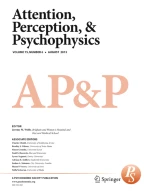Abstract
Two experiments, in which Ss were exposed to sequences of colored shapes, investigated effects on ratings of “pleasingness” and “interestingness” of variables that had previously been shown to affect ratings of “novelty.” The results indicate, on the whole, that both pleasingness and interestingness increase with novelty. These findings run counter to those of experiments indicating an inverse relation between novelty and verbally expressed preference. Two further experiments examined effects of some variables that might account for this apparent discrepancy. Homogeneous sequences declined in judged “pleasantness” more than sequences in which several stimuli were interspersed, and simple stimuli became less pleasant as they became less novel, while complex stimuli declined less or became more pleasant. The findings are related to hypotheses regarding mechanisms of hedonic value. Two crucial predictions were confirmed in a fifth experiment.
Article PDF
Similar content being viewed by others
Avoid common mistakes on your manuscript.
References
ALPERT, R. Perceptual determinants of affect. Unpublished MA thesis, Wesleyan University, 1953.
BERLYNE, D. E.Conflict, arousal and curiosity, New York: McGraw-Hill, 1960.
BERLYNE, D. E. Motivational problems raised by exploratory and epistemic behavior. In S. Koch (Ed.),Psychology-A study of a science. Vol.5. New York: McGraw-Hill, 1963a. Pp. 284–364.
BERLYNE, D. E. Complexity and incongruity variables as determinants of exploratory choice and evaluative ratings. Canadian Journal of Psychology, 1963b, 17, 274–290.
BERLYNE, D. E. Curiosity and exploration. Science, 1966, 153, 25–33.
BERLYNE, D. E. Arousal and reinforcement. In D. Levine (Ed.),Nebraska Symposium on Motivation, 1967, Lincoln, Nebr: University of Nebraska Press, 1967. Pp. 1–110.
BERLYNE, D. E.Psychobiology and aesthetics. New York: Appleton-Century-Crofts, in press.
BERLYNE, D. E., OGILVIE, J. C, & PARHAM, L. C. C. The dimensionality of visual complexity, interestingness and pleasingness. Canadian Journal of Psychology, 1968, 22, 376–387.
BERLYNE, D. E., & PARHAM, L. C. C. Determinants of subjective novelty. Perception & Psychophysics, 1968, 3, 415–423.
CANTOR, G. N. Children’s “like-dislike” ratings of familiarized and unfamiliarized visual stimuli. Journal of Experimental Child Psychology, 1968, 6, 651–657.
DAY, H. Exploratory behavior as a function of individual differences and level of arousal. Unpublished PhD thesis. University of Toronto, 1965.
DAY, H. Evaluations of subjective complexity, pleasingness and interestingness for a series of random polygons varying in complexity. Perception & Psychophysics, 1967, 2, 281–286.
DAY, H. The importance of symmetry and complexity in the evaluation of complexity, interest and pleasingness. Psychonomic Science, 1968, 10, 339–340.
FERGUSON, G. A.Nonparametric trend analysis. Montreal: McGill University Press, 1965.
MUNSINGER, H., & KESSEN, W. Uncertainty, structure and preference. Psychological Monographs, 1964, 78, No. 9.
OSGOOD, C. E., SUCI, G. J., & TANNENBAUM, P. H.The measurement of meaning. Urbana: University of Illinois Press, 1957.
SCHULTZ, D. P.Sensory restriction: Effects on Behavior. New York: Academic Press, 1965.
SKAIFE, A. M. The role of complexity and deviation in changing musical taste. Unpublished PhD thesis, University of Oregon, 1967.
ZAJONC, R. B. Attftudmal effects of mere exposure. Journal of Personality & Social Psychology Monograph Supplement, 1968, 9, No. 2, Part 2.
Author information
Authors and Affiliations
Additional information
This investigation was supported by Research Giant APB-73 from the National Research Council of Canada. Experiments HI and IV were carried out while the author held a Visiting Professorship at the Institut d’Esthétique et des Sciences de l’Art, University of Paris, awarded jointly by the Scientific Affairs Division of NATO and the Minna-James-Heineman Foundation, while on sabbatical leave from the University of Toronto. The data of Experiments I and II were collected by Jerry Colglazier, those of Experiments III and IV by Lydie Boudct, and those of Experiment V by Mary Louise King and Kathryn Davies. The author is indebted to them for their able collaboration. Experiments III and IV were carried out in the Laboratory of Experimental Psychology of the University of Paris-Nanterre, thanks to the cooperation of Professor R. Frances.
Rights and permissions
About this article
Cite this article
Berlyne, D.E. Novelty, complexity, and hedonic value. Perception & Psychophysics 8, 279–286 (1970). https://doi.org/10.3758/BF03212593
Accepted:
Issue Date:
DOI: https://doi.org/10.3758/BF03212593
